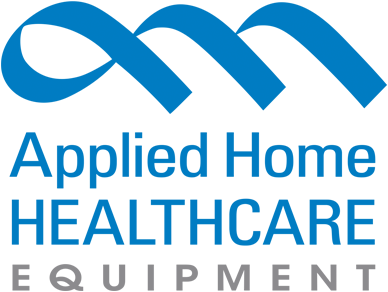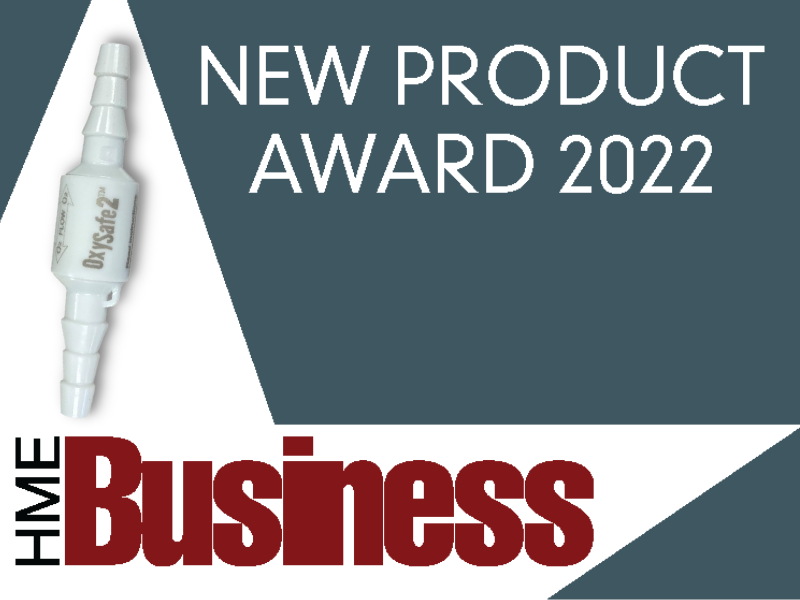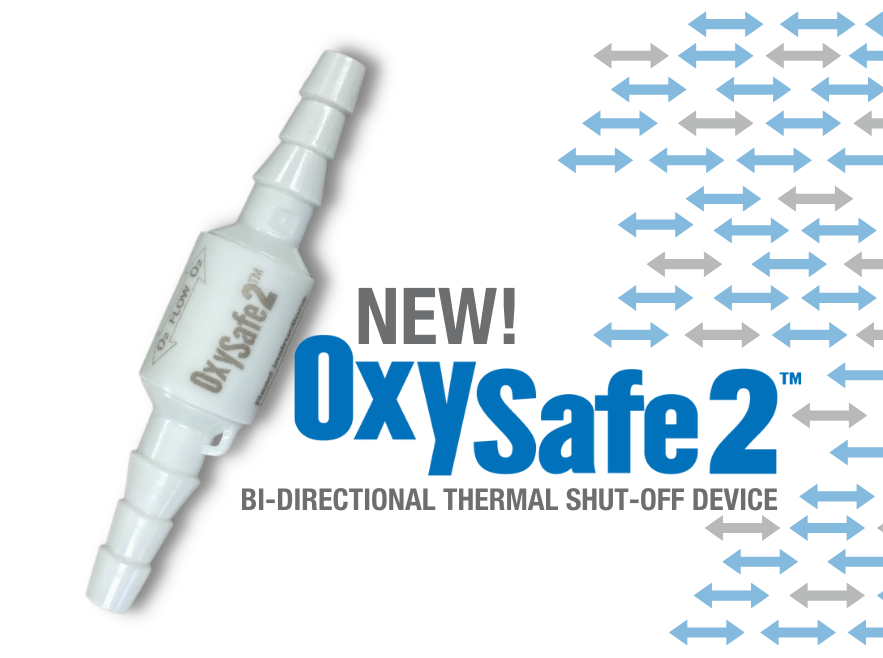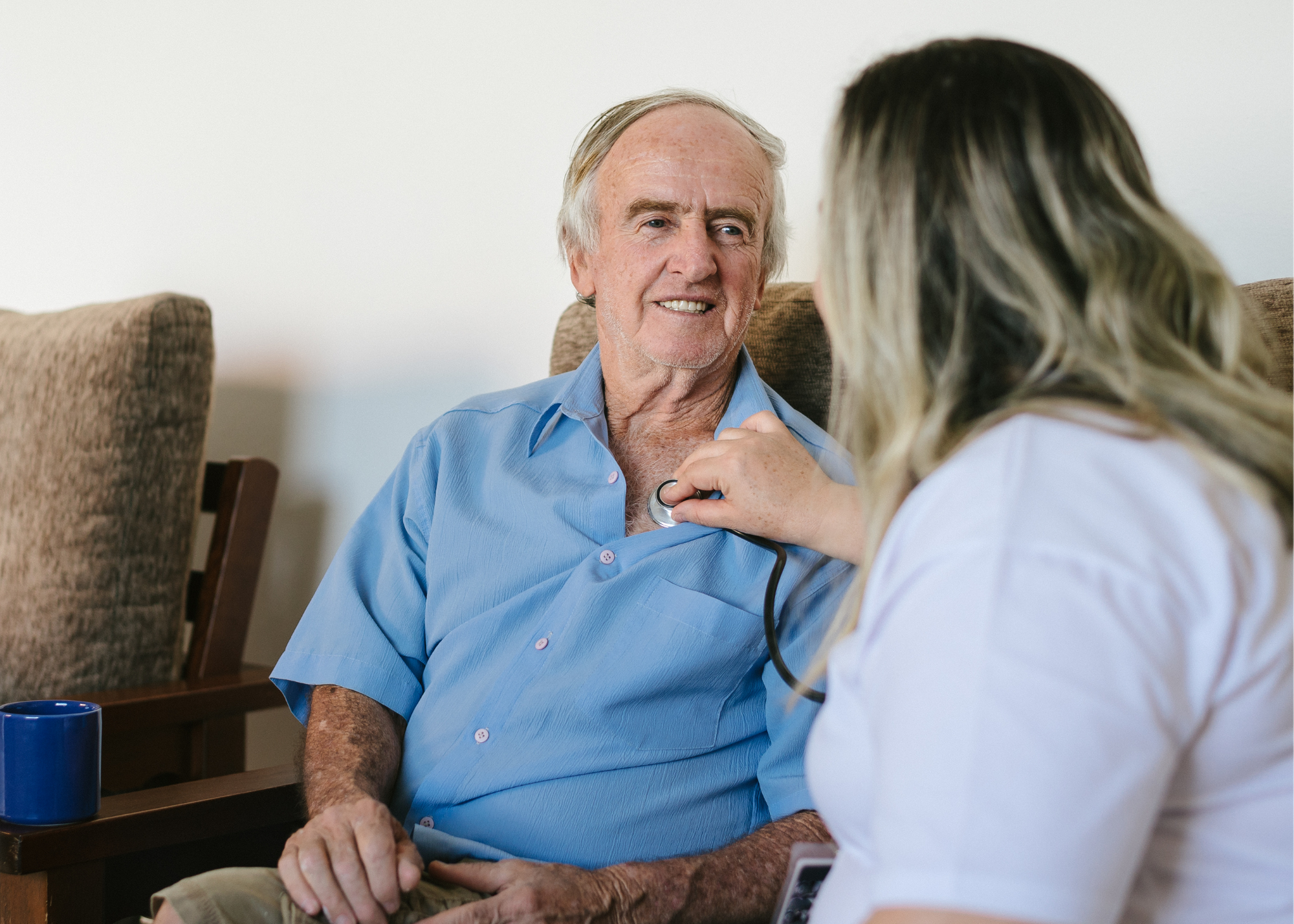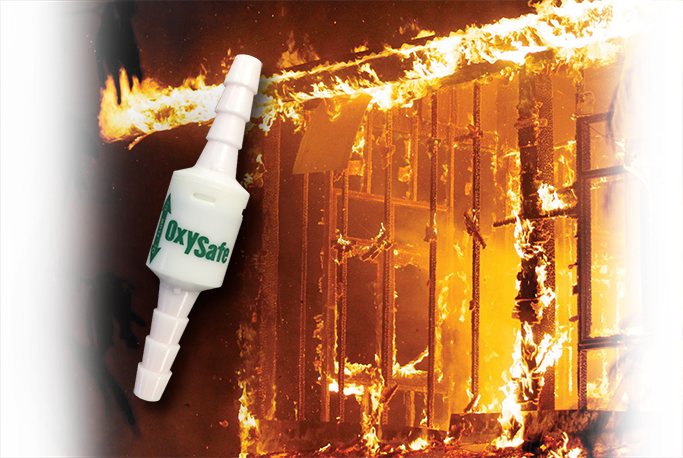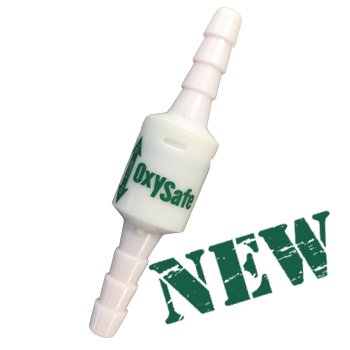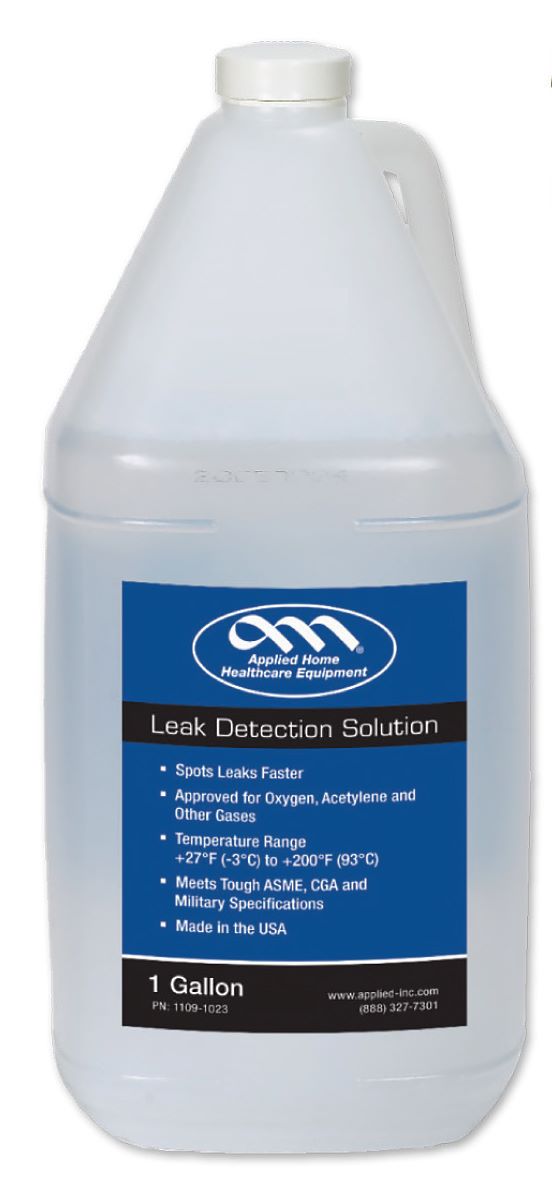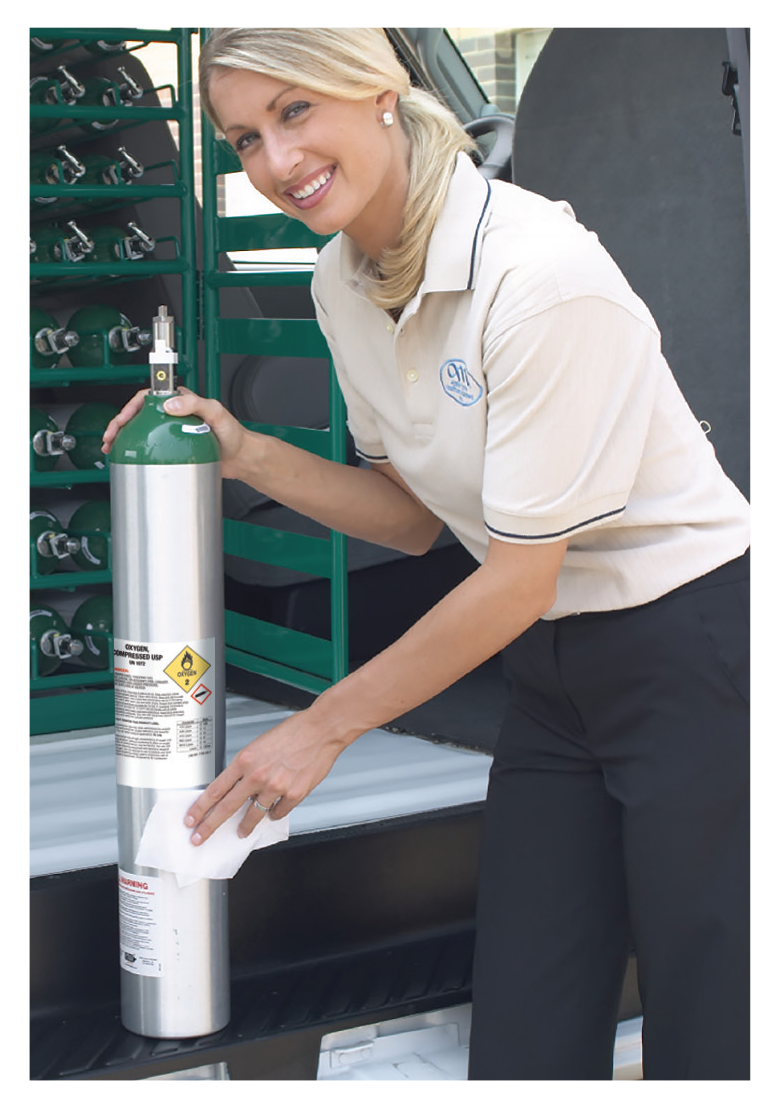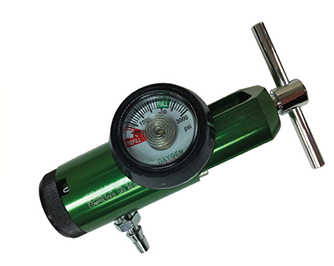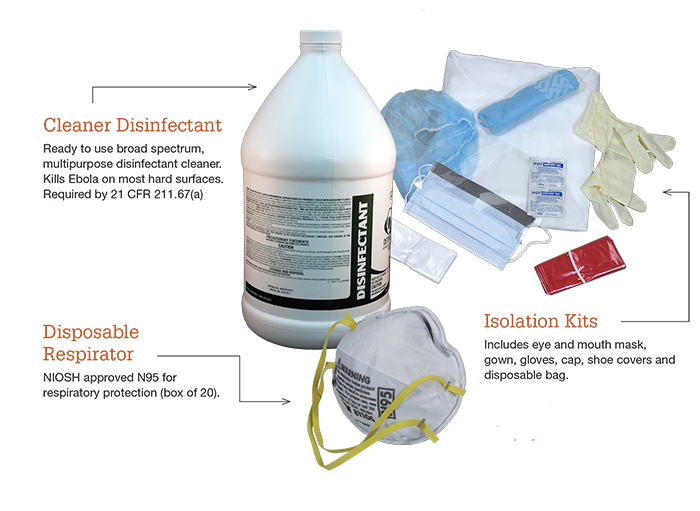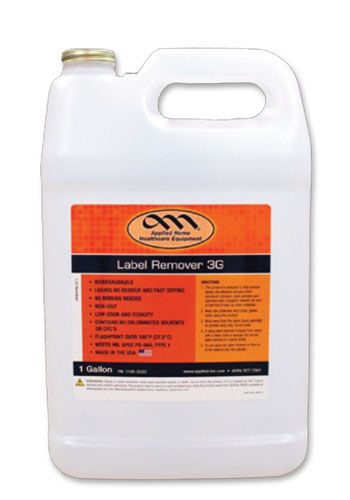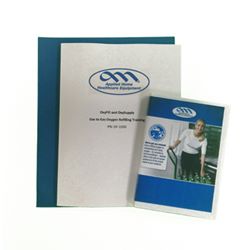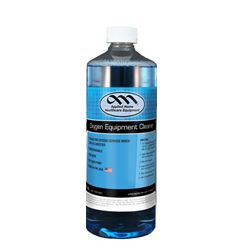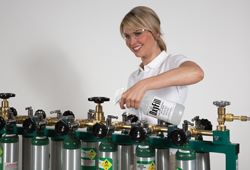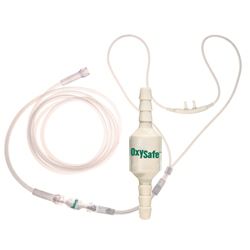PRODUCT CATEGORIES
CLASSES/REGISTRATION
WHAT'S YOUR ROLE?
Latest News
Category: Oxygen Safety
OxySafe2 Wins HME Business New Product Award 2022
WESTLAKE, OH | October 25, 2022 - OxyGo and Applied Home Healthcare Equipment are excited to announce that OxySafe2 has won a HME Business New Product Award in the category of Respiratory In-Home Equipment. "The HME Business New Product Award honors outstanding product development achievements by HME manufacturers and service providers. The competition is judged by a panel of HME providers from a variety of backgrounds and category specialties (HME Business, October 2022)." OxySafe2 is a thermal fuse designed to stop the flow of gas in the event that the downstream cannula or supply tube is ignited, and will meet VA, ISO and other regulatory requirements. With OxySafe2, the PVC tube is inclined to extinguish because PVC will not normally burn in air—offering healthcare providers a cost-effective solution to lower the risk of serious patient injury in a dangerous oxygen fire. This new version provides two directional protection against oxygen fires caused by patients smoking, using candles, stove-top ranges or other open flames while receiving oxygen therapy. Such fires are particularly prevalent in situations where oxygen therapy is provided in the home environment where there is limited patient supervision, though it may occur in environments like healthcare facilities and nursing homes. OxyGo and Applied Home Healthcare Equipment produce ambulatory oxygen solutions with DME companies in mind. Both are known for their amazing customer service, sal
OxySafe
OxySafe FAQ: Including How to Clean OxySafe, OxySafe Use With A Humidifier, OxySafe Replacement and OxySafe and Pooling.
Applied Announces Launch of OxySafe2™
Westlake, OH – August 18, 2021 – Applied Home Healthcare Equipment, a long-trusted resource for oxygen filling, technical and regulatory support for DME and HME providers, has announced the release of their newest model of their popular thermal shut-off device OxySafe2™. The new version provides two directional protection against oxygen fires caused by patients smoking, using candles, stove-top ranges or other open flames while receiving oxygen therapy. Such fires are particularly prevalent in situations where oxygen therapy is provided in the home environment where there is limited patient supervision, though it may occur in environments like healthcare facilities and nursing homes. Jim Christ General Manager of Applied Home Healthcare Equipment said “OxySafe has always been an important and reliable device for our providers who want to protect their patients from the dangers of home oxygen fires. We are excited to introduce this product line improvement to the OxySafe in order to help in the mitigation of oxygen fires.” OxySafe2 is a thermal fuse designed to stop the flow of gas in the event that the downstream cannula or supply tube is ignited, and will meet VA, ISO and other regulatory requirements. With OxySafe2, the PVC tube is inclined to extinguish because PVC will not normally burn in air—offering healthcare providers a cost-effective solution to lower the risk of serious patient injury in a dangerous oxyg
16 Tips for Oxygen Safety at Home
Oxygen is very safe to have in the home, as long as these guidelines are followed. Are the following 16 tips included in your oxygen safety training for your
What is OxySafe?
OxySafe™ is a thermal fuse designed to stop the flow of gas in the event that the downstream cannula or supply tube is ignited, and will meet VA, ISO and other regulatory
OxySafe Safety Update
As a reminder, in March 2018, the Veterans Health Administration issued a Patient Safety Alert mandating the use of thermal shut-off devices (also known as firebreaks, fire stop valves or fire safety valves) in all of its home oxygen patients’ installations. The VHA will be incorporating new requirements into all DME contracts for home oxygen. KEY POINTS OF THE PATIENT SAFETY ALERT The VA’s Patient Safety Alert requires that thermal fuses (firebreaks) are fitted to all home oxygen patients’ installations—unless there is a clinical reason for not doing so. The Patient Safety Alert applies to all patients, not just those deemed to be at ‘high risk’. Two thermal shut-off devices must be fitted on each patient installation. In other words, where a patient uses both stationary and portable oxygen, two thermal fuses must be fitted on the stationary oxygen source and two on the portable source. In the case of portable devices, the requirement only applies to those with a continuous flow. Following the Patient Safety Alert, all DME providers will be responsible to report home oxygen fires to the local VA medical center and must provide specific information about the fire. Any unidirectional thermal fuses must be replaced with bidirectional versions at the next scheduled visit or sooner (unless the unidirectional is designed so it cannot be fitted in the wrong orientation, if it has a thread or bayonet for e
NEW Easy-to-Install OxySafe
PRESS RELEASE: FOR IMMEDIATE RELEASE June 13, 2016 NEW EASY-TO-INSTALL OXYSAFE TWO DIRECTIONAL THERMAL FUSE AVAILABLE NOW TO HELP PREVENT OXYGEN FIRES CAUSED BY SMOKING OxySafe™ now offers a new installation step-saving bi-directional thermal fuse to help prevent oxygen fires caused by patients smoking while receiving oxygen therapy. It provides two directional protection against oxygen fires caused by patients smoking, using candles, stove-top ranges or other open flames while receiving oxygen therapy. Such fires are particularly prevalent in situations where oxygen therapy is provided in the home environment where there is limited patient supervision, though it may occur in environments like healthcare facilities and nursing homes too. OxySafe™ director of sales Jon Schultz noted that some studies have estimated 39% of COPD patients continue to smoke while on oxygen. He said that OxySafe’s new bi-directional thermal fuse saves time and effort in set-up. “It really is a convenience for the customer that eliminates the need to check to see that the arrow is pointing the correct way during installation,” said Schultz. “One less step may not sound like a lot, but it’s a huge benefit to the end user that saves installation time and enhances accuracy,” he continued. Easy-to-install thermal fuses such as the OxySafe™ are gaining in popularity as a way to combat home oxygen fires, especially by vet
What about Bob? Oxygen 101 The Road To Safety
During my career I lost two patients because they both were smoking cigarettes while on oxygen. The first patient actually was in his living room with his wife and visitors. He was a retired plumber and was very familiar with oxygen and its properties. He chose to smoke with his nasal cannula in place, something that he had done many times previously. But luck only lasts so long. The witnesses stated all they could remember was seeing flames coming from his mouth and
FDA requires 2 leak tests during the fill process
The FDA requires 2 leak tests during the fill process, one while the cylinder is filling and another on the cylinder after they have been filled. This test must be done on every cylinder, to ensure that the contents of the cylinder is not leaking out, and that the patient will receive the full contents of the
Quick Tips For Oxygen Cleaning!
What Is Oxygen Cleaning? Clean equipment that comes into contact with oxygen requires specific procedures to ensure that nothing is left on the surface that could interact with oxygen. There are two types of cleaning that are pertinent for oxygen equipment, cleaning with oxygen compatible cleaners and cleaning equipment for oxygen service. 1. Cleaning with oxygen-compatible cleaners Oxygen can react with any residue, particles, dirt, oil, grease or other contaminants that are left on the surface of equipment the comes into contact with oxygen, such as the cylinder surface. The body of a cylinder or a regulator for example, should be cleaned with chemicals that will leave nothing behind that will cause an interaction with oxygen. 2. Cleaning equipment for oxygen service Surfaces that come into direct contact with oxygen, such as the valve opening on a cylinder, the inside of a cylinder or oxygen connection, must not only be cleaned with an oxygen compatible cleaner, but also with special equipment and processes to ensure that the surface has no particles left behind. If there are even small particles on the wetted surface, the speed of the oxygen coming out of the valve, could actually ignite the particles. The procedure you’ll have to follow for this is found in CGA G 4.1. What about leak testing? According to FDA guidance and industry standards, soap and water solutions used to leak test are not recommended and may even prove dangerous. Soap contains animal fat
Subscribe to our Email List
Get the latest regulatory info, accreditation news and exclusive discounts!
 View Cart []
View Cart []